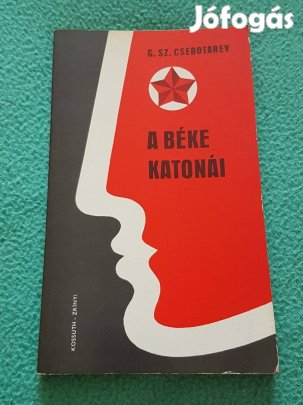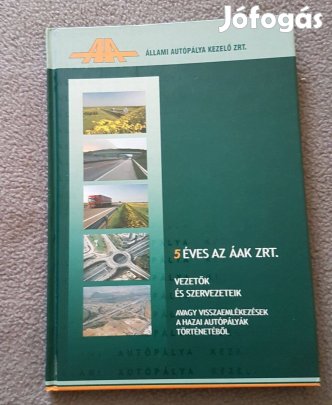
The History of Hungarian Art in the Twentieth Century
1 200
FtKategória:
Feladás dátuma:
több, mint egy hónapjaTulajdonságok
új
Művészet
Keménytáblás
Angol
Leírás
The History of Hungarian Art in the Twentieth Century
Szerző: Andrási Gábor, Pataki Gábor, Szűcs György, András Zwickl
Fordító: John Bátki
Corvina Books Ltd., 1999
290 oldal
Cérnafűzött, keménytáblás-papírkötésben
Színes és fekete-fehér reprodukciókkal
ISBN: 963-13-4809-1
Új állapotú
Fülszöveg
The story of twentieth century Hungarian art begins in 1896, the year of brilliant Millennial festivities that saw the opposition between the academic and modernist viewpoints break into the open. Alongside historicism. the art of the Secession flourished, and a handful of young artists set out for Nagybánya, the first waystation of modern Hungarian painting. The story continues with the avant-garde movements. the Group of Eight and the Activists; the official modernism of the School of Rome. the Post-Impressionist Gresham Circle during the interwar period, 1945 and its aftermath, the Fifties and the doctrines of Socialist Realism, the neo-avant-garde of the Sixties and Seventies, the political turnabout of 1989, and art after Post-Modernism. In addition to being a comprehensive survey of this centurys Hungarian art, this volume is the first to provide an account of the period from 1945 to our days, an account that is an independent, professional re-evaluation of the past fifty years, free of political pressures and censorship as well as of the various strategies formerly employed to evade them. Unlike earlier texts on Hungarian art history that emphasized so-called -progressive" tendencies, the authors here offer a more nuanced picture, with a balanced treatment of diverse movements and trends. The account of the past thirty years is a first of its kind: until now there has been no comprehensive monograph on this subject. The authors had to use new viewpoints to examine this period, and they made every effort to introduce the constantly evolving context and institutions of recent art - exhibitions. galleries. periodicals -as well as works by the youngest artists. Ten years have passed since the political changes of 1989. Since then the world has changed, as did art, but so did the outlook of art history. The end of the century has brought home the timeliness of a lively, authoritative history of 20th century Hungarian art - a summation with a new outlook accessible to the general public. The freshness of approach is guaranteed by the personalities of the authors. who are young scholars, museum specialists and curators, active participants in contemporary art. Gábor Andrási (b. 1954) is director of the Társaskör Gallery of Óbuda, Gábor Pataki (b. 1955) is adjunct director of the Art History Institute of the Hungarian Academy of Sciences and editor of the art magazine Új Művészet (New Art), György Szücs (b. 1960) is secretary for research at the Hungarian National Gallery and curator of its Department of Painting. while András Zwickl (b. 1964) is curator of the Hungarian National Gallery and adjunct professor at the Hungarian Academy of Applied Arts.
A 20. századi magyar művészet története 1896-ban, a millennium esztendejében kezdődik, akkor, amikor a fényes ünnepségek ellenére leplezetlenül feltárul az akadémikus és a modern szemlélet ellentéte. A historizmus mellett virágzik a szecesszió, néhány fiatalember pedig elindul Nagybányára, a modern magyar művészet első állomására. A történet az avantgárd törekvésekkel folytatódik, a Nyolcakkal és aktivistákkal, a két világháború közötti római iskola hivatalos modernségével, a posztimpresszionista Greshammel, 1945-tel, a realizmus doktrinája által meghatározott ötvenes évekkel, a hatvanas, hetvenes évek újavantgárd művészetével, a rendszerváltással, a modernizmus utáni kortárs művészettel.
...
Budapesten személyesen átvehető, vagy előre utalás után postázom (MPL automatába 2 kg-ig 1425,- ft, postán maradó 2265,- ft, házhoz kézbesítés 2915,- ft)
Kapcsolatfelvétel a Hirdetővel
Megosztás
Hasonló hirdetések
Ez is érdekelhet
Jófogás mobil applikáció
Keresett márkák
trabant
mini cooper
jbl
forza horizon 4
nintendo switch
samsung galaxy s10
lego friends
xbox one
husqvarna
mayo chix
iphone 11
iphone se
xiaomi mi 10
ps5
bonprix
bershka
tchibo
honfoglaló
kika
cropp
xiaomi redmi note 9 pro
miután
brawl stars
xbox series x
crystal nails
amerikai staffordshire terrier
iphone 11 pro
airpods
samsung tv
playstation 5
gamestar
iphone xr
apple watch
huawei p30 lite
samsung galaxy a51
iphone x
labrador
iphone 6s
husky
maine coon
ps4
iphone 7
iphone xs
ipad
iphone 8
Népszerű kategóriák
eladó lakás
monitor
téli gumi
ingyen elvihető
trambulin
elektromos roller
mosogatógép
puzzle
eladó lovak
laptop
eladó ház
okosóra
francia bulldog
használt autó
számológép
szinoníma szótár
konyhabútor
sakk
szájmaszk
halloween tök
mikrohullámú sütő
trapézlemez
adventi koszorú
elektromos kerékpár
kerti bútor
térkő
kávéfőző
számítógép
menyasszonyi ruha
futópad
gördeszka
tolóajtó
bluetooth fülhallgató
könnyűszerkezetes ház
dohányzóasztal
bejárati ajtó
kanapéágy
hintaágy
bicikli
diego szőnyeg
használt laptop
faház
hdmi kábel
aroma diffúzor
gáztűzhely
roller
tengerimalac
magaságyás
függőfotel









